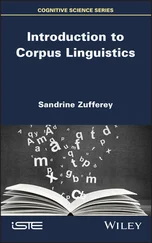structure of a number of common categories. Firstly, choose your
categories by identifying a number of superordinates for which fairly
large numbers of hyponyms exist, e.g. sport, occupation, vegetable,
fruit, crime. Then ask as many subjects as you can muster to write
down in thirty seconds as many instances of the category as they can
think of – make sure that they write them down in such a way that you
can ascertain the order in which they appear.
Examine your results for any obvious patterns across your subjects
and draw appropriate conclusions on whether your experiment is
consistent with the ideas on prototypes which have been discussed
in this section.
15
Lexical disorders
In the introduction (pp. 11ff.), we offered some preliminary remarks on the
types of language disorders which are of most interest to the linguist. These are aphasia and Specific Language Impairment (SLI) and it is important that we
re-emphasise a very important difference between these. Aphasia is a disorder of language and speech that is caused by a brain lesion which may be due to an
accident or a stroke, after language has been acquired in the normal way;
before the brain lesion occurred, aphasics had normally functioning language systems. By contrast, SLI is a term covering disorders in the normal acquisition of language without there being any clear primary deficit. Despite their linguistic problems, SLI children and adults have normal non-verbal IQs, no hearing deficits and no obvious emotional or behavioural disturbances; unlike aphasics, SLI
subjects have never acquired language in the normal way.
Aphasia provides us with a potentially valuable source of information as to
how linguistic representations are implemented in the brain. It is reasonable to suppose that we might learn how a machine (or any other physical device, such as the human brain) works by investigating how it goes wrong. In aphasic patients, there is typically some residual language left after brain damage, indicating that the knowledge of language can be selectively impaired by brain lesions, and it is by carefully studying the range and nature of such selective impairments that we hope to learn something about the interconnections of the brain mechanisms underlying language. From a different perspective, SLI provides an important strand in the argument for adopting the strong innateness views Chomsky and his followers propose. If our knowledge of language and, specifically, of grammar, is indeed controlled by our genes, then we should expect to find genetically caused disorders of grammatical development, namely in cases in which something has gone wrong with the language genes. SLI subjects provide us with the chance of studying the effects of a rather isolated, and probably genetically determined, deficit in the acquisition of language, specifically of grammar (see the main introduction for reasons for believing that the disorder is genetically determined).
In this section, we will focus on disorders which display their effects at the lexical and morphological level. We will firstly look at which linguistic properties of words and morphemes are typically lost in aphasics, and then describe which aspects of the lexicon and morphology are hard to acquire for SLI
subjects.
213
214
words
Words and morphemes in aphasia
Typically, aphasic patients are reported to have word-finding difficul-
ties, they sometimes mis-name things, or they use circumlocutions to replace difficult words. According to the standard clinical classification of aphasic syndromes, we can distinguish two characteristic types of errors of word usage in aphasia. The first is called agrammatism and affects function words such
as articles, auxiliaries, complementisers and bound morphemes, such as those marking tense and agreement in English, and also gender, case, etc. in those languages such as Italian and Russian which are inflectionally richer than
English. It does not affect content words such as nouns, verbs and adjectives (see section 9). Agrammatism is considered to be the characteristic symptom of Broca’s aphasia, and in our main introduction, we saw that this disorder tends to be associated with damage to a particular area of the left cerebral hemisphere. The second type of lexical disorder consists of paraphasias, which are errors in the use of content words that typically occur in Wernicke’s aphasics; function words seem to be unaffected in these cases. Consider, as an illustration, the following two attempts by aphasic patients to describe a picture of a child stealing a biscuit: (200)
Ah … little boy … cookies, pass … a … little boy … Tip, up … fall
(201)
They have the cases, the cookies, and they were helping each other with the
good
The example in (200) comes from a Broca’s aphasic. Speech like this is emitted slowly with great effort (a characteristic we have partially indicated by the pauses between different parts of the utterance). Content words such as adjectives (little), nouns (boy, cookies) and verbs (tip, fall) are produced by the patient, whereas function words such as articles and bound morphemes are sometimes omitted.
This combination of properties produces the characteristic telegraphic speech of Broca’s aphasics, a term which has given way to ‘agrammatism’ in more recent research.
It should be immediately apparent that the example in (201) is quite different from (200). This was produced by a Wernicke’s aphasic describing exactly the same picture. The speech of such patients is fluent and effortless, and the rate of production of words can exceed the normal rate (see section 14, p. 199). However, the content of the speech can be remarkably empty and convey little information, as illustrated by the sequence … and they were helping each other with the good in (201). Typically, Wernicke’s aphasics do not demonstrate disturbances of grammar and function words, but rather these patients make many errors in
content-word usage, e.g. cases instead of cookies in (201). This characteristic of inappropriate content-word selection appears also in reading aloud, where, for example, the sentence in (202a) is read as (202b):
(202) a.
The spy fled to Greece
b.
The spy filed to grain
Lexical disorders
215
The frequency of such paraphasias ranges from 10 per cent to about 80 per cent of words in extreme cases.
Let us now look at these two characteristic errors in word (and morpheme)
usage, agrammatism and content-word paraphasias, in a little more detail.
Agrammatism
According to the standard clinical classification, agrammatism is
defined as the omission of function words in speech production, whereas in
comprehension, agrammatic patients perform in the normal range. Recent linguistic studies have shown that this traditional clinical picture is too superficial and partly incorrect.
It is true that English-speaking agrammatics omit many function words, but
from studies on agrammatism in other languages, we quickly learn that this
observation cannot be generalised. Consider, for example, Italian. If Italian-speaking agrammatics were using the strategy of dropping functional elements, specifically bound morphemes, they would produce bare stems such as those
in (203):
(203)
*and-
ospedal-.
Non cred-
parol- …
go
hospital.
Not believe
word …
But these bare stems (and-, ospedal-, etc.) are not possible words in Italian, which has a stem-based morphology (see section 11), and utterances such as (203)
are not found in the speech of Italian agrammatics. What we do find is that
agrammatic patients use ‘unmarked’ verb forms, for example the infinitive, as in (204), or they produce inflectional errors such as the error in gender marking in (205):
Читать дальше
![Andrew Radford Linguistics An Introduction [Second Edition] обложка книги](/books/397851/andrew-radford-linguistics-an-introduction-second-cover.webp)











